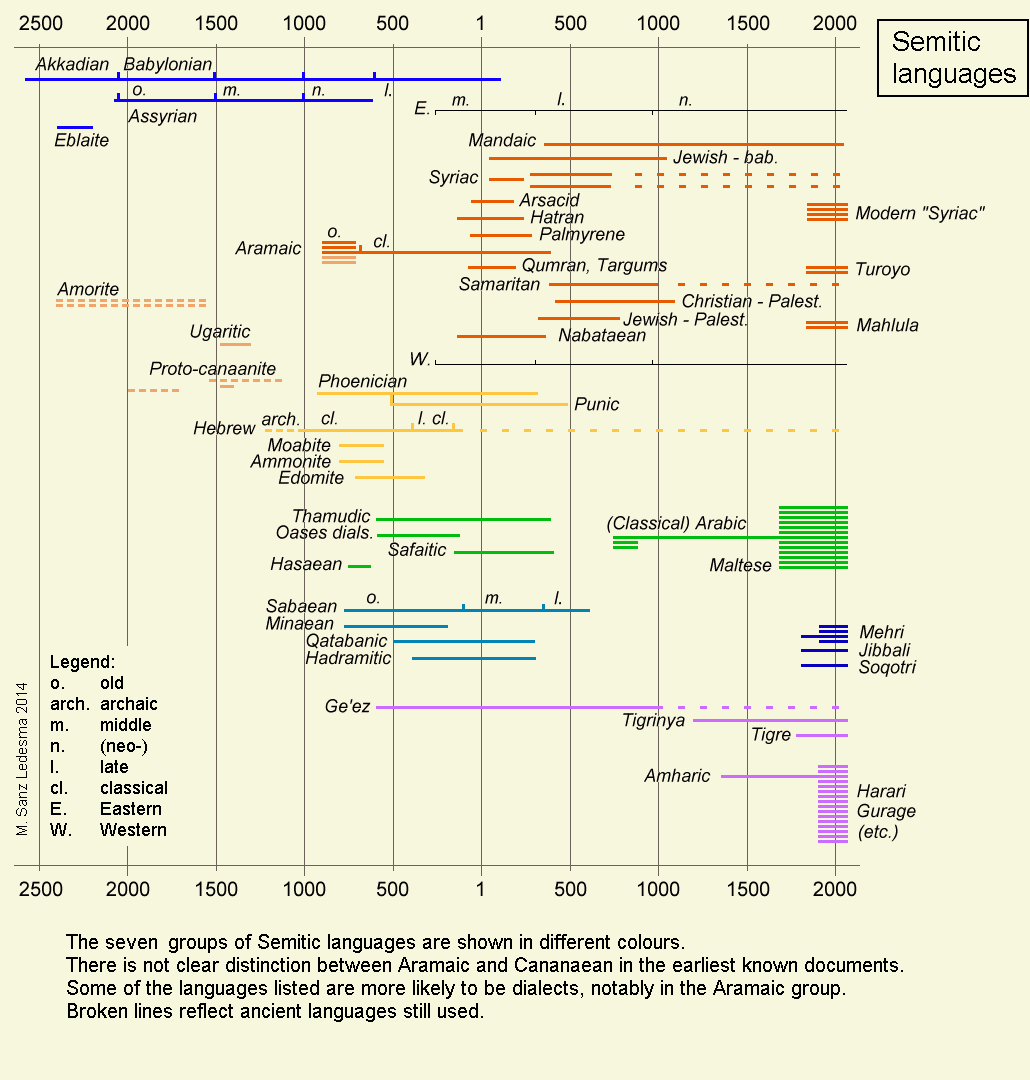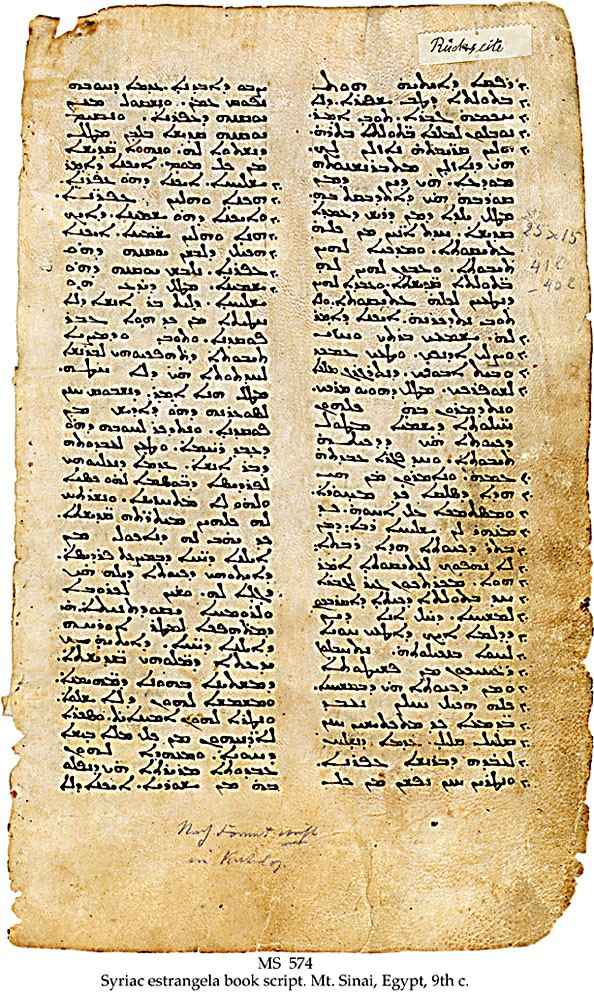|
Syriac Malayalam
Suriyani Malayalam (സുറിയാനി മലയാളം, ܣܘܪܝܢܝ ܡܠܝܠܡ), also known as Karshoni, Syro-Malabarica or Syriac Malayalam, is a dialect of Malayalam written in a variant form of the Syriac alphabet which was popular among the Saint Thomas Christians (also known as Syrian Christians or Nasranis) of Kerala in India. It uses Malayalam grammar, the Maḏnḥāyā or "Eastern" Syriac script with special orthographic features, and vocabulary from Malayalam and East Syriac. This originated in the South Indian region of the Malabar Coast (modern-day Kerala). Until the 19th century, the script was widely used by Syrian Christians in Kerala. Writing system There were numerous problems in writing Malayalam using the Syriac script, which was designed for a Semitic language. Only 22 letters were available from the East Syriac alphabet to render 53 or so phonemes of Malayalam. This problem were overcome by adopting letters from the Malayalam script. Basic Syriac ... [...More Info...] [...Related Items...] OR: [Wikipedia] [Google] [Baidu] |
South India
South India, also known as Southern India or Peninsular India, is the southern part of the Deccan Peninsula in India encompassing the states of Andhra Pradesh, Karnataka, Kerala, Tamil Nadu and Telangana as well as the union territories of Lakshadweep and Puducherry, occupying 19.31% of India's area () and 20% of India's population. It is bound by the Bay of Bengal in the east, the Arabian Sea in the west and the Indian Ocean in the south. The geography of the region is diverse, with two mountain ranges, the Western and Eastern Ghats, bordering the plateau heartland. The Godavari, Krishna, Kaveri, Penna, Tungabhadra and Vaigai rivers are important non-perennial sources of water. Chennai, Bengaluru, Hyderabad, Coimbatore and Kochi are the largest urban areas in the region. The majority of the people in South India speak at least one of the four major Dravidian languages: Telugu, Tamil, Kannada and Malayalam. During its history, a number of dynastic kingdoms ruled ove ... [...More Info...] [...Related Items...] OR: [Wikipedia] [Google] [Baidu] |
Syriac Alphabet
The Syriac alphabet ( ) is a writing system primarily used to write the Syriac language since the 1st century. It is one of the Semitic languages, Semitic abjads descending from the Aramaic alphabet through the Palmyrene alphabet, and shares similarities with the Phoenician alphabet, Phoenician, Hebrew alphabet, Hebrew, Arabic alphabet, Arabic and Sogdian alphabet, Sogdian, the precursor and a direct ancestor of the traditional Mongolian scripts. Syriac is written from right to left in horizontal lines. It is a cursive script where most—but not all—letters connect within a word. There is no letter case distinction between upper and lower case letters, though some letters change their form depending on their position within a word. Spaces word divider, separate individual words. All 22 letters are consonants (called , ). There are optional diacritic marks (called , ) to indicate the vowel (, ) and #Letter alterations, other features. In addition to the sounds of the language, ... [...More Info...] [...Related Items...] OR: [Wikipedia] [Google] [Baidu] |
Malayalam Script
Malayalam script (; / ) is a Brahmic scripts, Brahmic script used to write Malayalam, the principal language of Kerala, India, spoken by 45 million people. It is a Dravidian language spoken in the Indian state of Kerala and the union territories of Lakshadweep and Puducherry (Mahé district) by the Malayali people. It is one of the official scripts of the Indian Republic. The Malayalam script resembles Tulu script and Tigalari script, used to write the Tulu language, spoken in Tulu Nadu, coastal Karnataka (Dakshina Kannada and Udupi district, Udupi districts) and the northernmost Kasargod district of Kerala. Like many Indic scripts, it is an alphasyllabary (abugida), a writing system that is partially "alphabetic" and partially syllable-based. The modern Malayalam alphabet has 15 vowel letters, 42 consonant letters, and a few other symbols. The Malayalam script is a Vatteluttu alphabet extended with symbols from the Grantha alphabet to represent Indo-Aryan languages, Ind ... [...More Info...] [...Related Items...] OR: [Wikipedia] [Google] [Baidu] |
Semitic Languages
The Semitic languages are a branch of the Afroasiatic languages, Afroasiatic language family. They include Arabic, Amharic, Tigrinya language, Tigrinya, Aramaic, Hebrew language, Hebrew, Maltese language, Maltese, Modern South Arabian languages and numerous other ancient and modern languages. They are spoken by more than 330 million people across much of Western Asia, West Asia, North Africa, the Horn of Africa, Malta, and in large Immigration, immigrant and Expatriate, expatriate communities in North America, Europe, and Australasia. The terminology was first used in the 1780s by members of the Göttingen school of history, who derived the name from Shem, one of the three Generations of Noah, sons of Noah in the Book of Genesis. Semitic languages List of languages by first written account, occur in written form from a very early historical date in West Asia, with East Semitic languages, East Semitic Akkadian language, Akkadian (also known as Ancient Assyrian language, Assyrian ... [...More Info...] [...Related Items...] OR: [Wikipedia] [Google] [Baidu] |
Syriac Script
The Syriac alphabet ( ) is a writing system primarily used to write the Syriac language since the 1st century. It is one of the Semitic languages, Semitic abjads descending from the Aramaic alphabet through the Palmyrene alphabet, and shares similarities with the Phoenician alphabet, Phoenician, Hebrew alphabet, Hebrew, Arabic alphabet, Arabic and Sogdian alphabet, Sogdian, the precursor and a direct ancestor of the traditional Mongolian scripts. Syriac is written from right to left in horizontal lines. It is a cursive script where most—but not all—letters connect within a word. There is no letter case distinction between upper and lower case letters, though some letters change their form depending on their position within a word. Spaces word divider, separate individual words. All 22 letters are consonants (called , ). There are optional diacritic marks (called , ) to indicate the vowel (, ) and #Letter alterations, other features. In addition to the sounds of the language, ... [...More Info...] [...Related Items...] OR: [Wikipedia] [Google] [Baidu] |
Malabar Coast
The Malabar Coast () is the southwestern region of the Indian subcontinent. It generally refers to the West Coast of India, western coastline of India stretching from Konkan to Kanyakumari. Geographically, it comprises one of the wettest regions of the subcontinent, which includes the southern tip of Goa, Kanara region of Karnataka, all of Kerala and Kanyakumari region of Tamil Nadu. Kuttanad, which is the point of the List of extreme points of India#Altitudes, lowest altitude in India, lies on the Malabar Coast. Kuttanad, also known as ''The Rice Bowl of Kerala'', is among the few places in the world where cultivation takes place below sea level. The peak of Anamudi, which is also the point of highest altitude in India outside the Himalayas, lies parallel to the Malabar Coast on the Western Ghats. The region parallel to the Malabar Coast gently slopes from the eastern highland of Western Ghats ranges to the western coastal lowland. The moisture-laden winds of the Southwest m ... [...More Info...] [...Related Items...] OR: [Wikipedia] [Google] [Baidu] |
Orthography
An orthography is a set of convention (norm), conventions for writing a language, including norms of spelling, punctuation, Word#Word boundaries, word boundaries, capitalization, hyphenation, and Emphasis (typography), emphasis. Most national and international languages have an established writing system that has undergone substantial standardization, thus exhibiting less dialect variation than the spoken language. These processes can fossilize pronunciation patterns that are no longer routinely observed in speech (e.g. ''would'' and ''should''); they can also reflect deliberate efforts to introduce variability for the sake of national identity, as seen in Noah Webster's efforts to introduce easily noticeable differences between American and British spelling (e.g. ''honor'' and ''honour''). Orthographic norms develop through social and political influence at various levels, such as encounters with print in education, the workplace, and the state. Some nations have established ... [...More Info...] [...Related Items...] OR: [Wikipedia] [Google] [Baidu] |
The New Indian Express
''The New Indian Express'' is an Indian English-language broadsheet daily newspaper published by the Chennai-based Express Publications. It was founded in 1932 as ''The Indian Express'', under the ownership of Chennai-based P. Varadarajulu Naidu. Santwana Bhattacharya was appointed Editor-in-Chief on 1 July 2022, replacing G.S. Vasu. History ''Indian Express'' was first published on 5 September 1932, in Madras (now Chennai) by an ayurveda, Ayurvedic doctor and Indian National Congress member P Varadarajulu Naidu, publishing from the same Publisher, press where he ran the ''Tamil Nadu'' Tamil weekly. But soon, on account of financial difficulties, he sold it to S. Sadanand, founder of ''The Free Press Journal'', another English newspaper. In 1933, ''The Indian Express'' opened its second office in Madurai and launched the Tamil language, Tamil daily ''Dinamani'' on 11 September 1934. Sadanand introduced several innovations and reduced the price, but later sold part of his stak ... [...More Info...] [...Related Items...] OR: [Wikipedia] [Google] [Baidu] |


